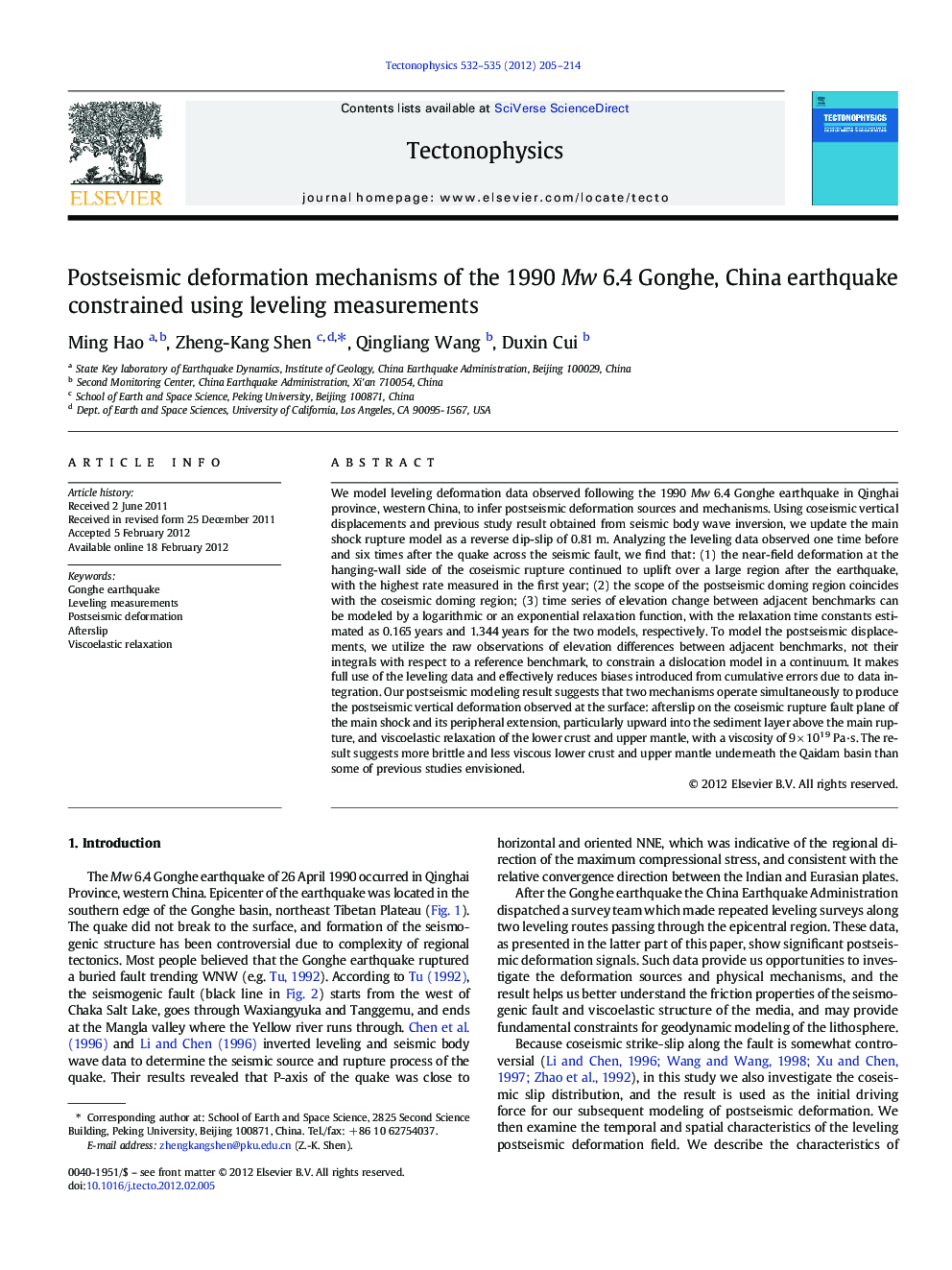| کد مقاله | کد نشریه | سال انتشار | مقاله انگلیسی | نسخه تمام متن |
|---|---|---|---|---|
| 4692863 | 1636826 | 2012 | 10 صفحه PDF | دانلود رایگان |

We model leveling deformation data observed following the 1990 Mw 6.4 Gonghe earthquake in Qinghai province, western China, to infer postseismic deformation sources and mechanisms. Using coseismic vertical displacements and previous study result obtained from seismic body wave inversion, we update the main shock rupture model as a reverse dip-slip of 0.81 m. Analyzing the leveling data observed one time before and six times after the quake across the seismic fault, we find that: (1) the near-field deformation at the hanging-wall side of the coseismic rupture continued to uplift over a large region after the earthquake, with the highest rate measured in the first year; (2) the scope of the postseismic doming region coincides with the coseismic doming region; (3) time series of elevation change between adjacent benchmarks can be modeled by a logarithmic or an exponential relaxation function, with the relaxation time constants estimated as 0.165 years and 1.344 years for the two models, respectively. To model the postseismic displacements, we utilize the raw observations of elevation differences between adjacent benchmarks, not their integrals with respect to a reference benchmark, to constrain a dislocation model in a continuum. It makes full use of the leveling data and effectively reduces biases introduced from cumulative errors due to data integration. Our postseismic modeling result suggests that two mechanisms operate simultaneously to produce the postseismic vertical deformation observed at the surface: afterslip on the coseismic rupture fault plane of the main shock and its peripheral extension, particularly upward into the sediment layer above the main rupture, and viscoelastic relaxation of the lower crust and upper mantle, with a viscosity of 9 × 1019 Pa·s. The result suggests more brittle and less viscous lower crust and upper mantle underneath the Qaidam basin than some of previous studies envisioned.
► An unconventional approach is introduced to optimally model leveling data.
► Afterslip is found on coseismic rupture fault upward into sediment layer above main rupture.
► Lower-crust and mantle of Qaidam basin was relaxed postseismically with viscosity of 9 × 1019 Pa·s.
► Result suggests less viscous lower-crust and upper-mantle underneath Qaidam basin.
Journal: Tectonophysics - Volumes 532–535, 6 April 2012, Pages 205–214